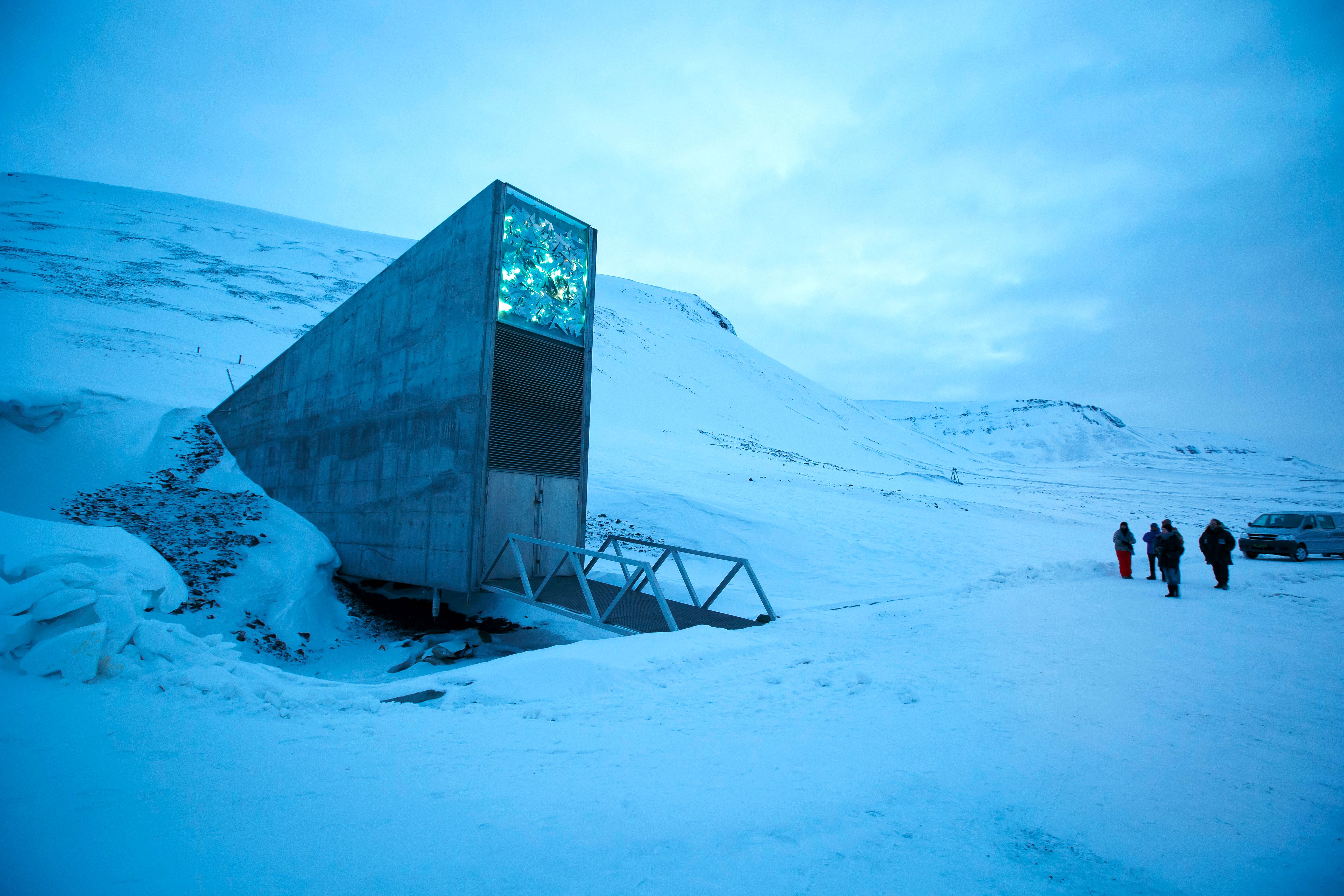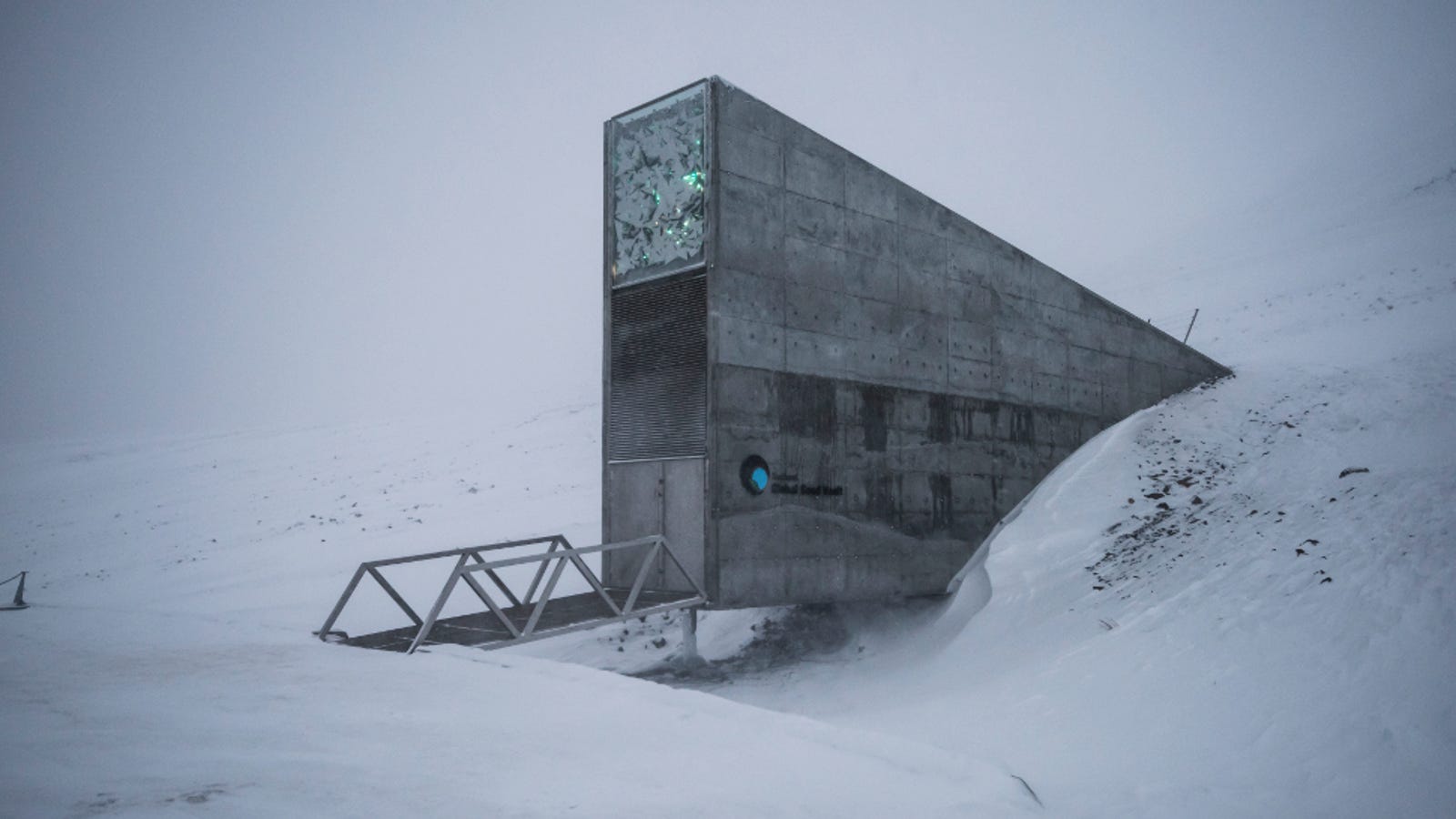
"That is really amazing being able to shoot it of course, but making your own dinner from the reindeer you have shot yourself, that is just fantastic," she says. Three years on she's a keen hunter and has shot several reindeer. "I thought why not do a mother-son thing," she says.
#DOOMSDAY VAULT OPENED LICENSE#
"To actually take a rifle home, people put their hand up and said, 'No I don't want to do this', whereas for me I just think why not, it's exciting, it's something different and I'm not going to be able to do that at home."Īs well as polar bears, the 2,000 residents of the world's most northern town also share this land with Arctic foxes and reindeer.Įach resident with a permit is allowed to hunt one reindeer per year.īente Navaerdal did the training when she first came to Svalbard with her son Erland, who at 14 was just old enough to get a hunting license himself. A lot of other people can be quite scared though," she says "It's so far removed from what I am used to.

On either end of the road out of Longyearbyen, the world's most northern town, there is a sign warning of the possibility of an encounter with a polar bear.
#DOOMSDAY VAULT OPENED HOW TO#
There is on this occasion actually only one shooter, 31-year-old Peita Houlihan from Brisbane, who takes aim at bulls-eye targets at the foot of a snow-clad mountain 30 metres away.īears are on Peita's mind - she is doing a refresher on the mandatory gun training she received when she arrived on Svalbard at the beginning of this year for a six-month stint, an elective in her Marine Biology degree at the University of Queensland.Īll newcomers to Svalbard have to learn how to use a rifle, if they ever want to leave town that is. "Are the shooters ready? When you are ready, four shots, fire!" bellows Frede Lamo, a safety instructor at the University in Svalbard. The seeds in the vault aren't the only Australian connection to Svalbard. While Longyearbyen's residents are proud to host this unique international collection, Bente is one of a relatively small number of residents to have seen inside the vault.įoreign dignitaries, scientists and media crews can go in when invited, but it is not open to those just wanting to have a look. It is made strangely beautiful by the shimmering greens and silvers of the artwork above the doorway and stretching along the top of the building - Perpetual Repercussion by Norwegian Dyveke Sanne. Only the very tip of the building is visible a sliver of concrete and steel jutting out into the Arctic snow on a hillside just out of town. The vault scientists say preserving the world's seeds is key to ensuring crop diversity and food security in the face of climatic and political instability. The idea underpinning the venture is that here deep in the Norwegian permafrost you have back-up copies of seed varieties from around the world - a safety duplicate of the ones held in smaller national or regional seed banks which are more vulnerable to natural disaster, conflict, or in some cases simply mismanagement. Original article on Live Science.Since the vault opened, 865,000 seed varieties have been deposited, among them wheat, barley, potatoes and almost 150,000 varieties of rice. Follow Live Science, Facebook & Google+. You can learn more about the Svalbard Global Seed Vault and take a virtual tour of the underground facility by visiting the Crop Trust website.įollow Elizabeth Palermo techEpalermo. In total, the vault can handle about 2.5 billion seeds (or about 500 seeds each from about 4.5 million varieties of crops).

Right now, the vault holds just less than 865,000 seed samples from all over the world, but it's capable of holding many more. Located about 800 miles (1,300 kilometers) from the North Pole, the area surrounding the vault is extremely remote, secluded and home to a number of polar bears. There are also the Svalbard archipelago's most notorious security guards to consider.

The vault is secured by four sets of locked doors, according to the Crop Trust. Should the power at the facility fail for any reason, the seeds will likely stay frozen thanks to the permafrost that covers the vault.Īnd there's very little chance that any ne'er-do-wells could make off with the world's most precious supply of seeds. Seeds stored in the Svalbard vault, which is built right into a sandstone mountain and covered in a thick layer of permafrost, are kept at an icy minus 0.4 degrees Fahrenheit (minus 18 degrees Celsius). "If something were to happen to one of those collections around the world, they can always come back to the seed vault and retrieve what might have been lost," Lainoff told The WorldPost. Constructed as a sort of last-ditch effort at protecting plants from extinction, the seed bank is meant to serve as a backup for gene banks like ICARDA, Lainoff said.


 0 kommentar(er)
0 kommentar(er)
